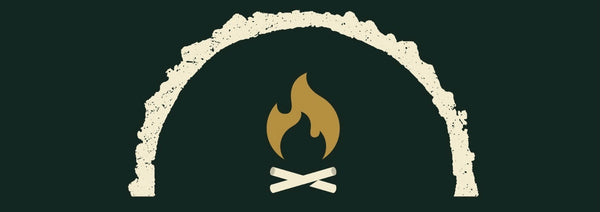What’s the Best Charcoal to Use? A Guide for BBQ Lovers Who Want to Level Up
Share
If you’re the kind of person who looks forward to firing up the grill on the weekend, who takes pride in nailing the perfect reverse-sear or getting that caramelised crust just right then the charcoal you use matters more than you might think.
Whether you’re new to charcoal cooking or you’ve been grilling for years, chances are you’ve wondered at some point:
Is there actually a difference between types of charcoal?
And if so, what’s the best charcoal to use for a better BBQ?
This guide will walk you through everything you need to know from how different charcoals are made, to what separates the cheap stuff from the premium, and how to choose the right option for your style of cooking.
Why Charcoal Quality Matters More Than You Think
Charcoal isn’t just a fuel source it’s part of the flavour. It controls how fast your food cooks, how evenly it grills, and even how clean or smoky it tastes.
Here’s what using better charcoal can do for your BBQ:
-
More consistent heat across the grill
-
Less smoke and bitterness
-
Better flavour retention in your ingredients
-
Longer, steadier burns (less topping up)
-
Faster light-up times with less frustration
Low-quality charcoal, on the other hand, can leave your food tasting acrid, your hands blackened from dust, and your grill filled with waste.
The Two Main Types of Charcoal: Lump vs Briquettes
1. Lump Charcoal
Lump charcoal is made by carbonising hardwood without additives or binders. It’s essentially wood that has been heated in a controlled, low-oxygen environment until only pure carbon remains.
Pros:
-
Lights quickly
-
Burns hot and clean
-
Low ash production
-
100% natural
Cons:
-
Can vary in size and consistency if not properly graded
-
Typically a bit more expensive
2. Charcoal Briquettes
Briquettes are typically made from compressed sawdust, binders, fillers, and sometimes even chemicals to improve lighting or burning. They’re uniform in shape and easy to stack, but that’s about where the benefits stop.
Pros:
-
Cheap and easy to find
-
Uniform shape
Cons:
-
Often contain additives or accelerants
-
Produce more ash and smoke
-
Tend to burn cooler and less evenly
-
Can leave unpleasant flavours in food
Bottom line: If you care about flavour and performance, lump charcoal is the clear winner.
Not All Lump Charcoal Is Equal
Even within lump charcoal, the quality range is massive. Some brands cut corners with poor production, mixed wood types, or minimal screening. Here’s how to spot the good stuff:
Look for:
-
Single wood type: Like Mallee root or Gidgee, not “lump hardwoods”
-
Kiln-fired or retort-produced: Ensures consistent carbonisation and low moisture
-
Even grading: Fewer tiny fragments or overly large chunks
-
Low dust content: Means less mess and more usable fuel
-
Neutral smell: Shouldn’t smell like chemicals or treated wood
At Wattle & Flame, we only use dense Mallee root wood, carbonised in precision-controlled kilns. It’s 100% natural Australian hardwood no additives, no filler, no waste.
What Type of BBQ or Cooking Style Do You Use?
Different charcoal formats suit different types of grills and cooking styles. Here’s how to choose the best fit for your setup.
For Traditional Charcoal BBQs or Kettle Grills (Weber-style):
Best charcoal:
-
Classic grade 35-70mm (medium-sized lump)
-
Burns evenly and gives good heat control for both direct and indirect cooking
-
Works great with slow-cooked roasts, snags, steaks, and veggies
For Open Flame or Argentinian-style Grills:
Best charcoal:
-
Signature grade 70+mm (larger lumps)
-
Longer burn time and high heat for searing thick cuts
-
Ideal for T-bones, tomahawks, or large ribeyes
For Yakitori or Hibachi-style Grills:
Best charcoal:
-
Searing grade 20-35mm (smaller, dense pieces)
-
Delivers a hot, fast burn with tight heat control
-
Great for skewers, fast sears, and high-flavour profiles
Mallee Root Charcoal: Why It’s One of the Best Woods You Can Use
Native to Australia, Mallee root is a dense hardwood that burns hotter, longer, and cleaner than most other options. It’s naturally low in moisture, which means it lights quickly and produces less smoke.
Here’s why BBQ lovers rate it so highly:
-
High carbon content: Better energy output
-
Low ash production: Less mess, more grill time
-
Even burn profile: No wild temp swings
-
Subtle aroma: Doesn’t overpower your ingredients
If you’re looking to level up your BBQ game with an Australian-made fuel source, Mallee charcoal is a no-brainer.
Common Mistakes People Make When Buying Charcoal
-
Choosing based on price alone: Cheap charcoal often burns faster, creates more waste, and ends up costing you more over time
-
Not checking the wood source: “Mixed hardwoods” often means inconsistency
-
Using lighter fluid: If your charcoal needs it, it’s not good charcoal
-
Storing it improperly: Charcoal can absorb moisture always store it in a dry spot
How to Store Your Charcoal Properly
-
Keep bags sealed and off the ground
-
Store indoors or in a dry shed
-
Use airtight bins if you break up bulk
-
Avoid moisture exposure it ruins ignition and performance
Final Thoughts
Great food starts with great fire. And great fire starts with great fuel.
If you’re serious about cooking over charcoal whether it’s for weekend cookups or slow-smoked briskets, investing in better charcoal is one of the simplest ways to improve your results.
No accelerants. No fillers. No guesswork. Just clean-burning, Australian-made hardwood charcoal that performs every time.
Want to Try Wattle & Flame?
We produce kiln-fired lump charcoal using pure Mallee root wood. It’s made right here in Australia with no chemicals, no waste, and no compromise.
👉 Visit wattleandflame.com.au to learn more
👉 Follow us on Instagram @wattleandflame for BBQ tips, behind-the-scenes, and giveaways
